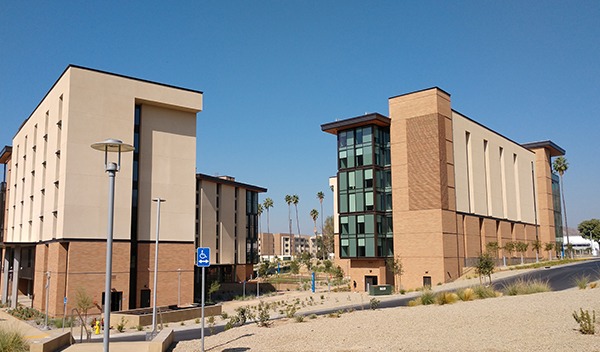Leaders in higher education are all too familiar with the complex challenges facing the industry: declining revenue and enrollment, aging assets and infrastructure, and a growing deferred maintenance backlog. Not to mention the threat of the “enrollment cliff,” now only four years away. The COVID-19 pandemic has exacerbated these challenges and even accelerated the impact of others such as online learning and subscription models, which are disrupting the higher education model as a whole.
A key theme at this year’s virtual P3 Higher Education Summit in October was how public-private partnerships (P3) offer higher education institutions an opportunity to gain some certainty amidst the complexity and ambiguity. One thing that was clear after listening to speakers at the conference, and as my colleague Liz Fennessy has said previously, P3s are here to stay.
How P3 developments can help your campus succeed
As discussed at the summit, P3s have allowed many campuses throughout the country to partner with an experienced developer to build or improve an asset while maintaining financial certainty and flexibility and limiting maintenance headaches – all with little risk for the institution. Student housing and energy projects are the most common P3 endeavors. However, as long as there’s a way to monetize the asset in question, there’s a way for P3 to help you pursue your mission while meeting customer and stakeholder needs. If you have a creative team you may be able to find a way to monetize different types of developments, including an academic building.
Subscription pricing model – the next big idea?
In TJ Logan’s Collective Good podcast on May 4, 2020, he asked his panelists what the future of higher education may look like. David Damon, Principal, Higher Education at Perkins & Will indicated students may subscribe, not apply, to the campus for a lifelong learning experience. The idea of subscriptions, i.e., a continuous revenue stream, is ubiquitous in our daily lives from our cable or favorite streaming service to our phones to the internet. Imagine a permanent tie between alumni and their alma maters, who are able to get the latest skills or learn a new favorite hobby, simply by paying a nominal monthly or annual fee. All of us could contribute to our institution’s next academic building or state-of-the-art tech lab, perhaps by P3 or another innovative relationship, simply by staying connected to our school.
For higher education leaders looking to build housing, convert to renewable energy sources, replace aging infrastructure, or simply to preserve debt capacity – especially with the additional uncertainty the pandemic has introduced, P3 may be the way to go. Additionally, Simon Allen, Associate Vice President for Asset Management at Cornell University, noted in the context of P3s, “Fundamentals need to be in place, [but] overall opportunities don’t necessarily go away because of a short-term problem.” Mike McCormick, Associate Vice President of Asset Management and University Architect at the University of Washington, noted the fundamental drivers for P3 remain, regardless of COVID, and the loss of design control in a P3, a common fear for higher ed leaders, is a myth.
Four questions to ask before pursuing a P3 project
One of the sessions at this year’s virtual P3 Higher Education Summit featured Korin Crawford, Executive Vice President at Griffin Structures and Seth Merewitz, Partner at the law firm of Best Best & Kreiger. They discussed the 4 “P’s” to consider before deciding to pursue a P3 arrangement, dubbed the “P4 before the P3.” Those 4 “P’s” include:
- What is the problem? What challenge is your organization trying to tackle?
- What is the project? That is, what are you going to do to tackle the problem?
- What is happening on and off campus, i.e., what are the politics you are dealing with? Are there concerns from neighbors, the community, or unions? You will want a clear path to manage the politics.
- Is it a priority in your organization? You need buy-in from the top for the project to gain traction. In my experience, you also need a champion. For the project to be successful, it is critical to have someone who is passionate, willing to lead this priority, flesh out what it looks like, and attract and engage others to join.
These are great questions to go through with your campus team to ensure a P3 is the right approach and that all team members are aligned on the purpose of the project. Once everyone on your team is aligned, here are key elements to ensure you achieve success for your students and your campus.
Three key elements to a successful higher education P3
Align your approach to P3s with your university’s vision and purpose
What is your campus’s brand? It’s important to understand, because as TJ Logan, Associate Vice President for Student Affairs at Temple University, noted, institutions that “target the issues important to students will be the successful ones.” Your university’s vision informs your campus needs and master plan and will therefore also inform your approach to P3s. It’s important for your internal team to be aligned on your vision before embarking on a P3 project and selecting your teaming partners. The team should establish clear priorities before selecting P3 teaming partners so you know what you are and are not willing to give up on your project.
It’s not just about experience and cost when selecting a developer. Make sure they understand your vision and are driven to meet the unique needs of your campus. Remember, the developer is your single most important teaming partner for this endeavor. Engage and ask questions to get it right in selecting a partner, not just a developer.

Establish what budget or financial arrangement you are comfortable with
As Merewitz said at the conference, P3 is not free money. What are you able and willing to spend? Is having an equity position a must-have or nice-to-have? These are the types of questions you’ll need to consider when determining your budget and financial model with your board of trustees. Developers can get creative in how they structure the deal, so make sure you understand what is being presented to you by working with a P3 advisory firm or attorney who has experience in P3 deals.
Noel Brinkman, Senior Vice President of Public/Private Partnerships at American Campus Communities says, “Looking at the revenue stream from each financial arrangement is key to evaluating feasibility. With a P3 approach, there is an overall opportunity for lower cost and a holistic perspective of the project. With a prudent risk transfer to the developer, the misperception of the developer to ‘just make a profit’ is mediated. You can select an ownership model which achieves your financial objectives while providing the desired product for the institution.”
Communication is the most important key to your P3 success
Remember: you are all on the same team. P3 projects require more extensive collaboration than your typical campus project because you need to satisfy the needs of both the owner and developer.
Haley & Aldrich’s CEO Larry Smith often says problems are gold. Corny? Maybe. Accurate and a good perspective? Definitely. Strong communication and transparency among all team members allow for seeing and tackling problems head on as they arise. Be sure to make any challenges visible early and make decisions with consensus from the whole team.
At the P3 conference, Gary Moriarty, Regional Business Development Manager at Swinerton, said that with P3, there is “much more to discuss, from vision, to project, to financial arrangement, to design, construction, and delivery, to O&M. You have to look at all of the different inputs to evaluate related project costs and iterate to find the right mix.” Thus, frequent and transparent conversations are critical. As my colleague Liz said last year, both developers and schools want commitment, clarity, and fairness.
Meet intention with action
Of course, you don’t want to sell your institution, yourself, or your campus short – it will be difficult to succeed simply by selecting a bidder based on an RFP. You must be willing to put in the time and effort to achieve success. Don’t be afraid to talk to your peers about their challenges, learnings, and successes with P3s or to consult an advisory firm. With an engaged, passionate internal team, support from leadership, and a developer partner that you can trust with a team laser focused on your values and mission, you can deliver success for your campus through a P3 project.
Haley & Aldrich staff have partnered with developers on P3 projects throughout the country. I’d be happy to share what I’ve learned from our P3 project experience. Send me an email to discuss how your institution can gain some certainty from a P3 project.
Published: 2/10/2021
Author

Senior Associate, Institutions Leader




